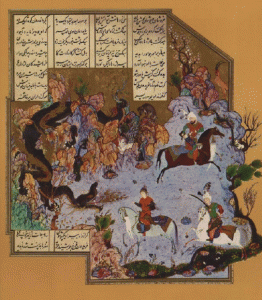World Building Wednesday: A series of short posts in which I write about my personal theory of how I approach world building, specifics of things to consider, and practical suggestions on how to use world building in the text. This is not a prescriptive program. I don’t think people must do things the way I do. I talk about my process because it is what I know. That’s it. Short bites: long tail.
I always start with a map.
However–and this is crucial–there are two kinds of maps.
One is the physical, geographical “external” map.
The other is the socio-cultural “internal” map.
When I use the word map many people think I am talking about a physical representation of the geography of a world. But a map isn’t limited to physical representation. Maps are patterns we impose. When world building I believe it is important to be aware of maps AS PATTERNS and to think about what these often unconsciously-imposed patterns may mean when we create a secondary world.
As world builders, writers can go over the same sort of terrain over and over again because it’s the landscape people are familiar with.
Here are three well worn narrative maps:
King (or any authoritarian adult male figure) dies at hand of usurper, son flees, and must return to overthrow the usurper and restore rightful rule/status.
Evil lord or horde lays waste (or oppressive king places chains on his subjects) and band of heroes must rise up (rise up!) to take back the land and/or beat back the threat.
Two people meet and feel attraction; obstacles intervene and are overcome; they kiss.
Most readers recognize these sorts of narrative maps, and often choose to return to places that have familiar contours. I do, too. There is nothing wrong with creating a setting that feels familiar and comfortable and is populated by characters who act in ways familiar and comfortable to you as the writer. I do this as well, or in specific ways within my books.
Just be aware that stories that are specific to your experience and your comfort and familiarity level are not universal stories, even if we have been told they are. For example, the Joseph Campbell version of The Hero’s Journey is not universal, it is particularist. That’s fine that it is what it is, but best not to claim for it something it is not.
The beauty of fiction in general and fantasy and science fiction in particular is that we always have a chance to move beyond the border, beyond the boundaries, to see the world in a way we haven’t looked at it before.
While building a world, I believe one must constantly negotiate the balance between the experiences and subjective assumptions I bring to the world I’m creating and the experiences and assumptions that are meant to exist in the world itself, that are meant to represent this specific world’s way of being rather than my own way of being.
I can think like I do, but I also need to know how the people in my world think.
If the two are the same, I need to know and recognize that. If they are different, I need to write their world as the characters see it, not as I see it. (I’ll explore this point in more detail in a later post.)
Furthermore, maps are not objective. It is commonplace to define a “western-style” map as an objective measure of the land, but it isn’t. Mapmakers are always making choices about how a place is represented and what matters enough to put on the map.
No one builds a world from an objective place. As a world builder, you are making a series of decisions about what matters enough to go in the map, and about what and how it is represented. If a place or character isn’t on YOUR map, the map in your mind of what matters about the world you want to write about, then you the writer can certainly not go to places you’ve never thought about, places you think don’t matter enough to warrant notice. Matters that aren’t visible to you.
This is why the map I start with is the internal map.
Every character in the story has an internal map through which they measure, comprehend, and navigate the world they live in. Their maps won’t be the same as every other character’s, and they (probably) won’t be the same as mine.
To understand how “the peoples of my world” look at the world they “live in,” I have to move outside my own narrow range of experience. To a fair degree I never can, but with conscious effort I can attempt to widen my view and shrink my limitations bit by bit and piece by piece. If I don’t think about the unconscious ways in which my understanding of the world is limited by my upbringing and its setting, and by my own cultural expectations and experiences and perceptions and biases, then I will bring those unexamined assumptions into my world building (and I do indeed do this all the time despite my efforts not to). Again, it’s fine to do that if that’s the story you want to tell, but that too is a choice. Own it.
So, yes, early on in the process I will draw a cartographical representation of the physical world. Yet for me the most important “map” is bigger than that. It’s not flat, it’s multi-dimensional: A physical map intersects with this internal map, and these conjoined maps influence and are influenced by the architecture of the narrative as it unfolds.
#
Next week: The Internal Map
Previously: Introduction, The Flowering of an Image, Inductive to Deductive, Image to Idea: A Practical Idea, Deductive or Inductive: A Guest Perspective (Aliette de Bodard)

